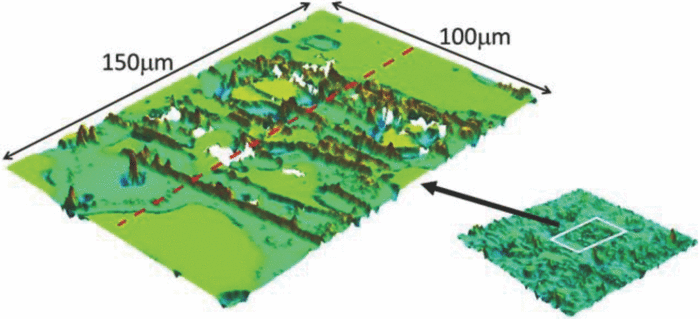Researchers at Tohoku University in Japan have developed a new low-cost flat panel light source that could pioneer a new generation of brighter, cheaper and greener lighting devices to rival LEDs. The device uses arrays of highly conductive carbon nanotubes to deliver evenly-distributed illumination with high efficiency and a power consumption as low as 0.1 Watts – about 100 times lower than that of light-emitting diodes.
LED lights are renowned for their high efficiencies, but the fact that only a fraction of the photons they produce actually ends up illuminating the surrounding environment suggests that there is still much room for improvement. One alternative approach explored by Prof. Norihiro Shimoi and colleagues was to build a structure based on carbon nanotubes, one-atom thick layers of carbon folded into a cylindrical shape.
This state-of-the-art device has a diode-like structure like LEDs but, curiously enough, the way in which it produces light is actually closer to the cathode ray tubes used in the TVs and computer monitors of the past century. Under the influence of a strong electric field, each carbon nanotube acts as a tiny cathode ray tube that releases a high-speed beam of electrons from its tip. These electrons then hit a phospor screen kept under vacuum and, in the process, release a small amount of energy that causes the phospor to glow.
Building the device was a fairly simple, low-cost process. The researchers started by mixing highly crystalline single-walled carbon nanotubes with an organic solvent and a surfactant compound. They then painted the mixture on the cathode and scratched the surface with sandpaper, which allows the electrons to more easily separate from the tip of the nanotubes.

Their test device needs a high voltage of 5 kV to produce the strong electric field that makes the electron emission mechanism work, but the researchers say the power consumption of the device is actually very low – as little as 0.1 W, which is two orders of magnitude less than LEDs require. This is partly because of the very low resistance posed by carbon nanotubes, and partly because the electron emission mechanism generates beams that are about 1,000 times denser than those in an incandescent light bulb, while also being much more directional and easy to control.
"Many researchers have attempted to construct light sources with carbon nanotubes as field emitter," said Shimoi, "but nobody has developed an equivalent and simpler lighting device."
The scientists say their simple, unoptimized device already achieved a good brightness homogeneity and fairly high lighting efficiency of 60 lumens per watt, which compares to around 100 lm/W for LEDs and 40 lm/W for organic LEDs, or OLEDs. With further development, this holds promise for cheaper, greener, and eventually, brighter devices that could compete with or surpass the performance of LEDs.
The development of the device is described in the latest issue of the journalReview of Scientific Instruments.
Source: American Institute of Physics







